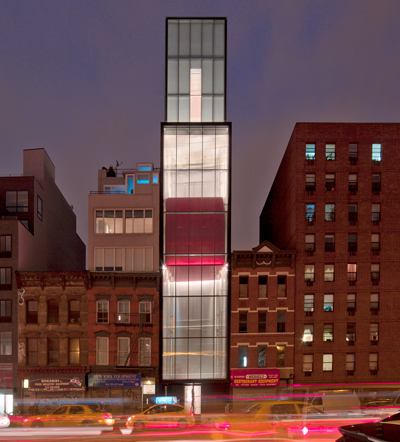
Building exterior (Night). Sperone Westwater, 257 Bowery, New York. All Photograph courtesy of Nigel Young/Foster + Partners.

Stunning new buildings are popping up all around the Bowery. First there was SANAA’s tower for the New Museum, which was followed by Morphosis’ building at 41 Cooper Square for Cooper Union. Now, on the Bowery just south of Houston Street, they’re joined by a building for
Sperone Westwater Gallery designed by the great English architect
Norman Foster.
The slender, eight-story building is incredibly elegant. It’s a simple, stepped volume with a poured concrete frame, a front facade of laminated glass, and side and back facades of corrugated metal panels. The whole building feels dressed up. Even the metal panels, which are standard industrial panels painted matte black, have a refined look. This formality is striking amid the surrounding rough-and-tumble Bowery storefronts, but it also muffles some of the building’s power.
The most anticipated feature of the new building is the Moving Gallery, a room at the front clad in bright red panels that slides up and down from floor to floor just behind the glass facade. It’s an interesting gimmick and, when lit up at night, a striking effect.
(more…)

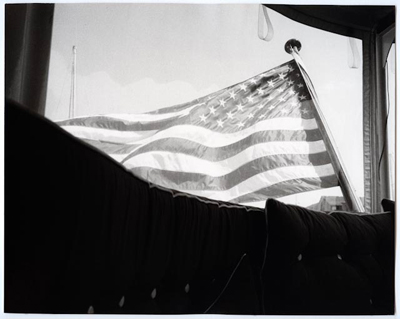
Photography by Andy Warhol. Courtesy of The Andy Warhol Foundation for the Visual Arts, Inc. (Click images to enlarge)


It feels like everything has been said about Andy Warhol. Each year seems to produce another biography, another collaboration, another exhibition. Not that Warhol is turning in his grave — he would have loved the undying attention. But to say something fresh about him has become a challenge, one that Deborah Bell was more than happy to undertake with her new exhibition,
Andy Warhol’s Street Diary.
“This show is all about Andy’s eye for composition, light, for formal arrangements, for detail,” Bell said at the opening reception. “I always knew that Andy was interested in photography, but it was usually as a means to an end. These were the end product.”
All the prints in the exhibition are unique, although their variants have been used for Warhol’s stitched photographs. The twenty-five black and white pictures depict him as a flaneur who loved wandering the streets of New York documenting its minutia. The photos carefully juxtapose the grand against the mundane, and this coexistence of diamonds and trash is what gives New York its character. Here is an Yves-Saint Laurent shop window, and here is the flea market, the garbage can and the Rockefeller center Christmas tree. In the catalogue that accompanies the exhibit Jonas Mekas rightly notes that Warhol did not pass judgment on his subjects, and the photos in the exhibition speak to that.
Andy Warhol’s Street Diary, Photographs 1981-1986 at
Deborah Bell Photographs, 511 West 25th St., Suite 703, New York.
(more…)

Photography by Hisham Bharoocha courtesy of Mountain Fold

A group show featuring photographs by Ari Marcopoulos,
Hisham Bharoocha, and Ports Bishop, among others, opens tonight at
Mountain Fold.
In an era in which anyone with a cell phone can snap a photograph of his or her daily life and then instantly publish it for the world to see, it’s easy to grow numb to the bombardment of images, personal or otherwise. In
Life, contemporary artists engage, rather then distance themselves from, our contemporary impulse to document all aspects of our daily routines. Through capturing such banal (and beautiful) subjects as a knife slicing through a stream of tap water, a still-life of a plastic bust, plastic flowers, burned CDs, and flowers, these photographers explore what lies behind the impulse to document one’s life, and the ways in which photographs create a reality separate from the one they capture.
The opening reception for
Life is tonight from 7-9pm at
Mountain Fold, 55 Fifth Avenue, 18th Floor, New York.
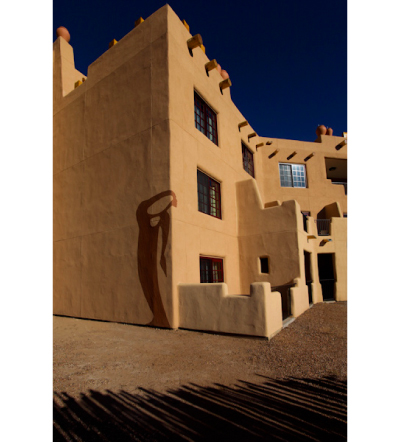
Watchers, Rose B. Simpson. TIME was photographed by award winning, Santa Fe based photographer, Julien McRoberts who is renown for her stunning imagery of the Southwest.

Every now and then, a project comes around that belts you in the brain, creating one of those “aha!” moments we all love but can’t anticipate. TIME stands for Temporary Installations Made for the Environment and has been around since 2005. This year’s exhibition is the first under the direction of fine art consultant and gallery owner Eileen Braziel, and was photographed by award-winning Santa Fe-based photographer Julien McRoberts, renowned for her stunning imagery of the Southwest. The state-driven art project (funded by the New Mexico One Percent for the Arts act as part of the Art in Public Places program) has chosen “Green Technologies/Innovative Ideas or Materials” for its 2010 theme and features everything from a hand-painted tipi and adobe windmills to biodegradable glass bowls and solar-powered lights.
According to Braziel, New Mexico is an ideal setting for the ongoing project. “In New Mexico we understand that the first innovators were the Native Indians and settlers. Solar, wind, and water are the most fundamental elements guiding green technology, and often drive ideas in New Media art installations where artists are using solar panels, LED lights, LED projectors, etc.” Additional materials used in the exhibit include traditional adobe bricks, earth, seed, biodegradable soap and recycled metals from the Los Alamos Laboratory. A barcode located on the plaque of each installation allows viewers to download free information about each artist using their phones, completely eliminating the use of paper.
(more…)

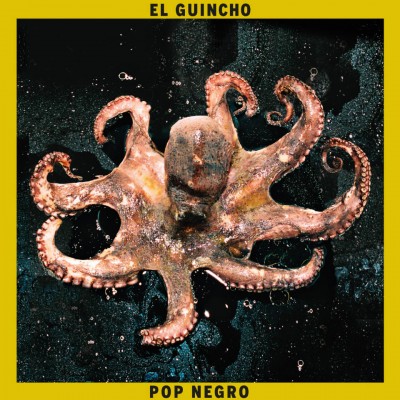
Young Turks

Like its 2008 predecessor
Alegranza!, the sophomore follow-up from El Guincho (real name Pablo Díaz-Reixa) plays like a celebration — a hybrid between Animal Collective’s brand of experimental pop and Brazil-entrenched tropicália. It’s surf rock for the southern hemisphere, a reverb-heavy set charged by an arsenal of drum samples both syncopated (“Bombay”) and full-bodied (“Soca Del Eclipse”). Of course, you may not understand a bit of what Díaz-Reixa is talking about unless you’re some degree of bilingual. Sung entirely in Spanish,
Pop Negro’s muscle lies in the power of its rhythmic impressions. Every song has an audible clap, a smack that boosts the break in the beat — even the schizophrenic quickness of “(Chica-Oh) Drims”. Díaz-Reixa is a formidable frontman, and though his lyrical intonations can get lost in translation, his raw energy is eminent on album highlights “Lycra Mistral” and “Ghetto Fácil”. This is one the entire world should be able to get behind.
Audio clip: Adobe Flash Player (version 9 or above) is required to play this audio clip. Download the latest version here. You also need to have JavaScript enabled in your browser.
Buy this at Other Music or iTunes.
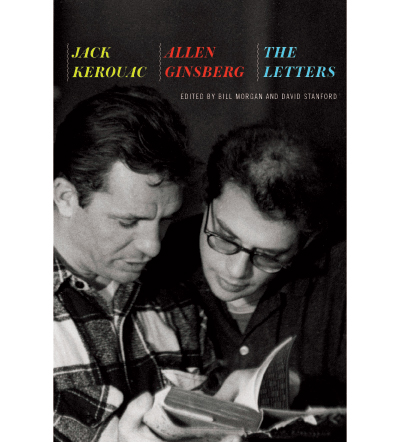
Book cover courtesy of Viking Press

The Beats’ place in the popular imagination is akin to Che Guevara’s face on a faded t-shirt: iconic and romantic, emblematic of a myth, not a historical reality. Still, this much is immune from any kind of distortion: the work the Beats produced permanently altered not only American literature and culture, but world literature and culture as well.
Somewhere in the process, however, they too were altered. Shortly after the publication of
On the Road in 1957, the small circle of beat (as in crushed) writers, hipsters, and junkies became Beatific, a generation with a capital G, caricatures of characters they had created. Transformed into avatars of authenticity, they became legends, but also lost a great deal — namely, a sense of humanity.
The epigraph of
Jack Kerouac and Allen Ginsberg: The Letters, which comes from a letter from Kerouac to William S. Burroughs, promises to remedy that. “Someday The Letters of Allen Ginsberg to Jack Kerouac will make America cry,” wrote Kerouac in 1961, by which point he had finally attained the recognition he had sought for so long, only to recoil from the “voice of a generation” moniker that had been thrust upon him. He had been famous for four years, had produced all of his major works, and had all but resigned himself to the fact that he would be unable to quit drinking. He retreated from public life, emerging only periodically throughout the 1960s, his body swollen from drink, to make increasingly reactionary statements about Vietnam and hippies and sit-ins.
(more…)
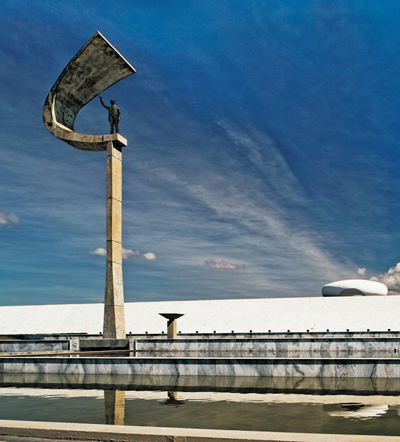
Juscelino Kubitschek Memorial, Brasilia, Brazil. Oscar Niemeyer, 1980. Photography courtesy of Rizzoli USA (Click image to enlarge)
 To honor the fiftieth anniversary of Brasilia, Brazil’s modern capital city, we asked Rafael Schimidt, architect and Director of the Instituto de Arquitetos do Brasil, Departamento de Sao Paulo, to share his thoughts. We’re also presenting photographs by Alan Weintraub from the impressive new monograph “Oscar Niemeyer: Buildings“.
To honor the fiftieth anniversary of Brasilia, Brazil’s modern capital city, we asked Rafael Schimidt, architect and Director of the Instituto de Arquitetos do Brasil, Departamento de Sao Paulo, to share his thoughts. We’re also presenting photographs by Alan Weintraub from the impressive new monograph “Oscar Niemeyer: Buildings“.
For a Brazilian, Brasilia brings to mind
Oscar Niemeyer.
Lucio Costa and his role in planning the city remain practically unknown. The confusion comes from the fact that when someone visits or sees pictures of the place, what’s instantly perceived are the famous buildings created by Niemeyer, such as the Three Powers Plaza, the Ministries Offices, the Cathedral, or the Jucelino Kubitsheck Memorial, even though other great architects also designed fine buildings for the city.
Brasilia is a postcard city that every Brazilian wants to visit at least once, and also an administrative capital, but not a place where anyone would specifically choose to live, spend free time, or work. And as the majority of Brazilian politicians seem to serve their own interests, Brasilia is seen by the population as a center of political corruption.
(more…)
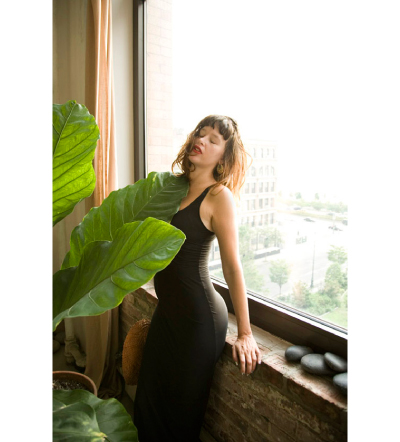
Photography by Derek Peck. Click Image for Slideshow

From my regular column in AnOther magazine.
The first time I heard the name Paz de la Huerta I assumed she must be very famous and that I had simply missed her on my radar. Her name has that ring, that majesty; it’s the kind of name you want to repeat to yourself out loud, just for the pleasure of hearing it. De. La. Huer. Ta. Did Nabokov name her? Like all European names, the “de” suggests a lineage descending from aristocracy. Maybe it’s that same background that has made it possible for Paz to be so nonchalantly late today. Who knows? In any case, somewhere out there, among the jostling, overambitious hoards of Manhattan, making her way from Midtown to Tribeca, where I wait for her, walks a beautiful young actress, a woman whose name means “Peace” in Spanish, and who is about to be famous beyond her wildest dreams (or perhaps exactly like them).
When Paz finally arrives, exiting onto the floor from a vintage 1930s-era elevator carriage, she is damp with August heat, the sweltering greenhouse reality that has been our New York summer. It’s not the most flattering way to meet a starlet, but Paz pulls it off with an aplomb that is serene and unapologetic. After a brief greeting she excuses herself to the washroom, douses her face and hair with cold water, then curls up in an armchair, sufficiently cooled.
(more…)

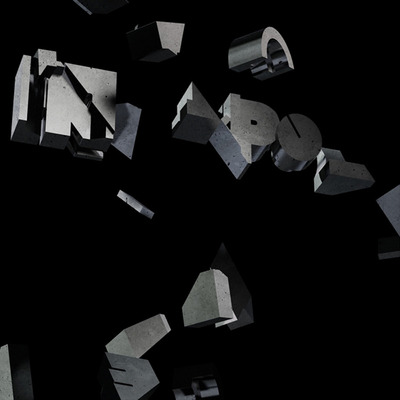
Matador Records

Interpol’s 2002 debut,
Turn on the Bright Lights, was a damning success. The band arrived too fully formed, setting expectations unattainably high for their subsequent follow-ups. Unattainable, though, because critics and fans are conditioned to expect a band to evolve, topping their previous achievements. Interpol do not evolve. They work instead to hone a singular sound, refining a melancholy mixture of post-punk and professional indie rock, and delving deeper into its exploration.
Interpol has two key sounds: atmospheric and driving. On their last album,
Our Love to Admire, the band dabbled in shoegaze, emphasizing its music at its most ethereal, but Interpol is leaner and more driving. The guitars and drums on “Lights” (see video, after the jump) are the hardest they’ve been since “Slow Hands” from the sophomore album,
Antics.
Audio clip: Adobe Flash Player (version 9 or above) is required to play this audio clip. Download the latest version here. You also need to have JavaScript enabled in your browser.
Buy this at Other Music or iTunes.
(more…)
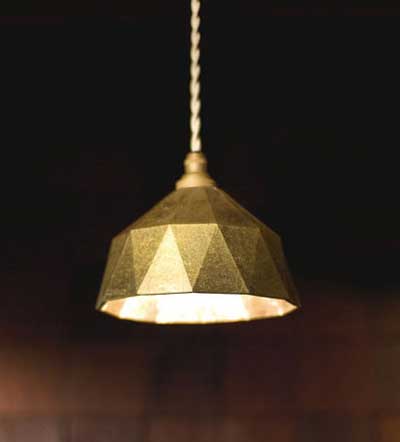
Myojo Pendants by Futagami x Masanori Oji

When Masanori Oji set out to attend a metal workshop taught by the president of Futagami, a unique collaboration was set into motion.
Oji is one of Japan’s most prominent young designers. Originally trained in architecture, his transition to product design found him working mostly with materials like paper, felt, and wood to create simple, award-winning designs he calls “Living Products”. Mr. Oji had wanted to design a brass bottle opener and saw the Futagami workshop as the perfect opportunity to learn about brass casting from one of the nations oldest metal ware manufacturers. Futagami has been hand making brass, bronze, and tin products for over a century in Toyama-Takaoka City.
Upon completion of the workshop, Masanori proposed to design a unique line of brass livingware for Futagami, who accepted graciously.
In 2009, Futagami released a series of celestial brass bottle openers and trivets designed by Masanori Oji. Iconic shapes of the Sun, the Milky Way, and the Crescent Moon, invoked both modern and antique flavors in polished and textured brass. The collection was a great success, winning an award from Interior Lifestyle in Tokyo that year.
(more…)





 Facebook
Facebook Permalink
Permalink Digg
Digg Reddit
Reddit LinkedIn
LinkedIn StumbleUpon
StumbleUpon Tumblr
Tumblr














